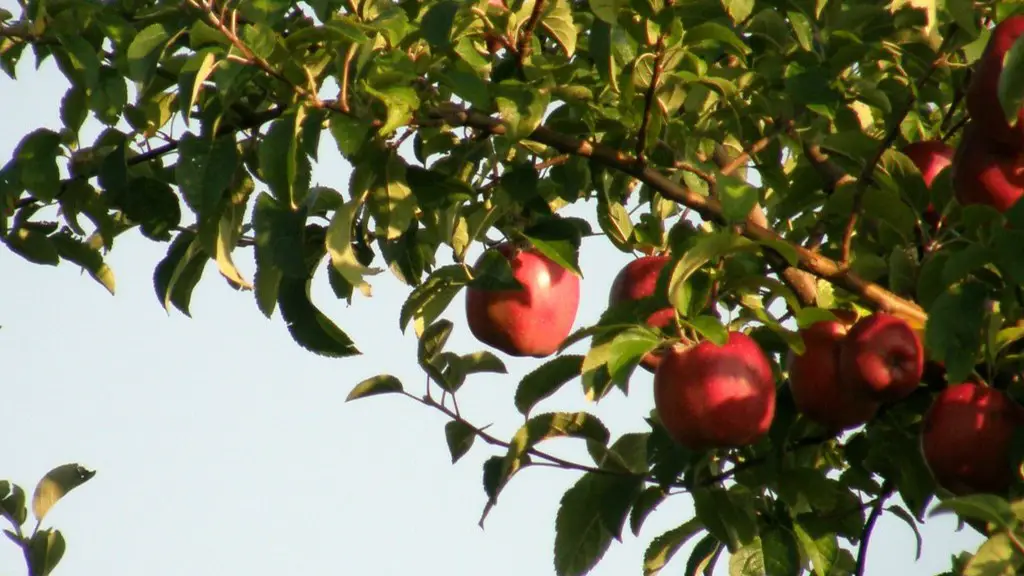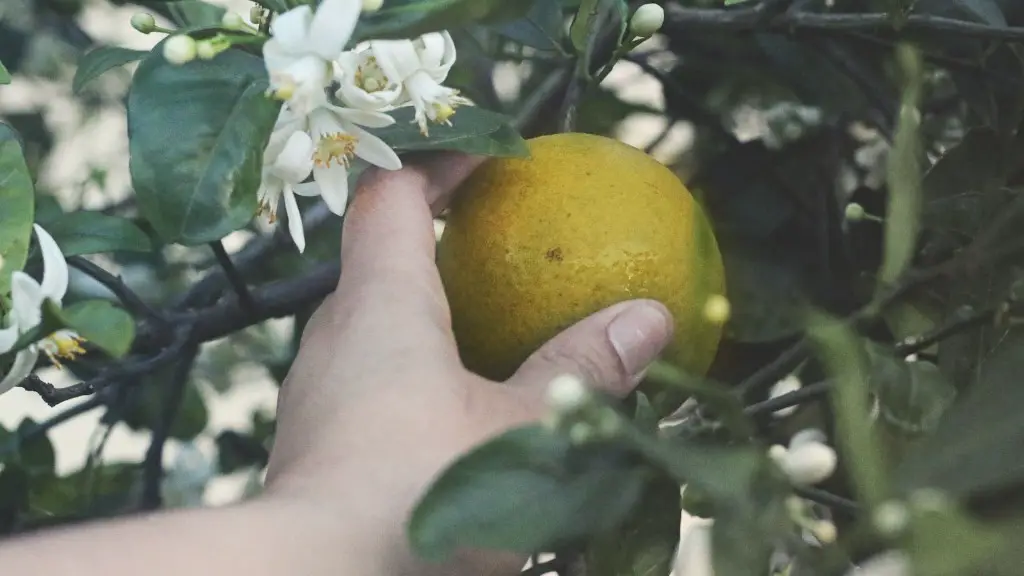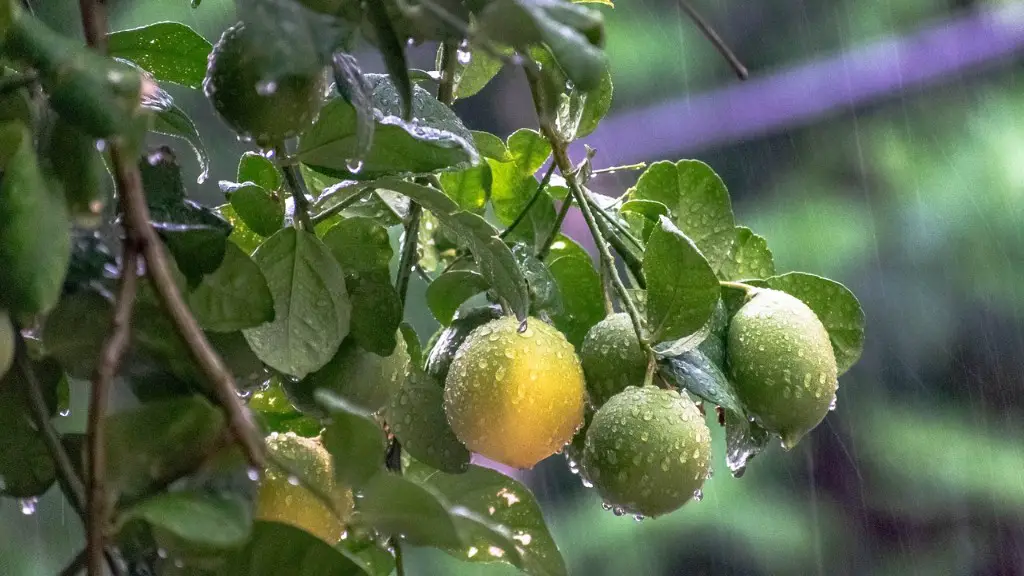Custard apples thrive when they are properly cared for. With basic maintenance and knowledge of the tree’s needs, you can help grow a healthy and productive tree. Here are some tips on how to take care of your custard apple tree.
Start by determining what type of soil your tree needs. Custard apple trees prefer well-draining, slightly acidic loam soil with plenty of organic material. This can be accomplished by adding compost or soil amendments to your planting area.
Custard apple trees require full sunlight, so place your tree in an area that receives direct sun for at least six hours per day. Too little light will lead to unhealthy leaves and fewer fruits.
Proper watering is essential for a healthy custard apple tree. Water regularly in the early morning to avoid water loss due to evaporation. The tree will require more water during dry spells and when the fruits are developing.
Fertilizing your custard apple tree is important to keep it healthy and productive. Choose a fertilizer specifically designed for fruit trees and follow the instructions on the label. Too much fertilizer can be detrimental to your tree’s health, therefore it is important to be mindful not to over-fertilize.
Pruning your custard apple tree is essential in order to keep it healthy and keep it from becoming overgrown. Pruning helps to remove dead branches and encourages the growth of new, healthier branches. Prune after the winter months, when the tree is dormant.
Do not forget about pest control. If you notice any signs of pests or disease, it is important to address them quickly. Common pests include aphids, mealybugs, and scale insects. Treating the infestation as soon as possible is key to protecting the tree from damage.
Dealing with Disease
Diseases can be a major issue for custard apple trees, so it is important to be vigilant and take steps to protect the tree. The most common diseases include anthracnose, scab, and powdery mildew. Prevention is the best way to deal with any of these diseases. Keep the area surrounding the tree free of debris and weeds and water the tree properly.
If a disease has already taken hold of your custard apple tree, be sure to address it as soon as possible. Treat the tree with an appropriate fungicide and do not forget to follow the directions on the label. Regular fungicide applications may be necessary if the disease appears consistently.
Keep an eye out for signs of disease. Common symptoms include discolored leaves, stunted fruit growth, and dieback of branches. Removing any diseased branches or fruit can help to reduce the spread of the disease and help to keep the tree healthy.
Prevention is key when it comes to dealing with diseases, so it is important to take the necessary steps to protect your custard apple tree. Keep your tree healthy through proper care and regular preventive treatments.
Harvesting the Fruits
When your custard apple tree is producing fruit, it is important to keep an eye on it so that you can harvest them at the right time. Custard apples are ripe when they are soft to the touch and the skin changes from a green to an orange or brown color. It is important to harvest them as soon as they are ripe in order to avoid damage or spoilage.
Once the fruits are harvested, they will need to be stored properly if they are not consumed right away. Custard apples need to be refrigerated if they are not consumed within a few days. They can be kept in a plastic bag in the fridge for up to a week.
It is also important to clean the fruits before consumption. Gently rub off any dirt and debris with a soft cloth. If you are not consuming them immediately, then you can safely store them in the fridge for a few days before eating.
Do not forget about the leaves of the tree as well. The leaves can be used for various purposes such as making teas and medicinal remedies. The leaves should be harvested when they are young and tender, before they become tough and leathery.
Keep an eye out for signs that your tree needs to be harvested. The fruits should be soft and the skin should be changing color. When they are ripe, harvest them quickly and store them properly if you are not consuming them right away.
Proper Checkups
Regular checkups are important for any type of tree, so it is important to perform regular checkups on your custard apple tree. Look for signs of disease or pests and take swift action if any are found. Check for any broken or dead branches, and prune them if necessary.
Check the soil around the tree as well. Make sure that the soil is properly drained and is not too wet or dry. If the soil is too dry, then you may need to add a bit of water to keep it moist.
Observe the leaves to make sure they are healthy and free of discoloration. If the foliage is yellowing or wilting, it may be a sign of disease or nutrient deficiency. Be sure to take action as soon as possible if any of these signs are noticed.
Also be sure to check for any fruits that may need to be harvested. Keep an eye on the fruits as they ripen and harvest them as soon as they are ready. Storing the fruits correctly will help to keep them from spoiling too quickly.
Custard apple trees need regular checkups in order to stay healthy and productive. Taking the time to perform regular inspections will help to keep your tree healthy and productive for years to come.
Herald with Proper Pest Control
As with any type of tree, pests can be an issue for custard apple trees. Common pests include aphids, scale insects, and mealybugs. Left untreated, infestations can quickly spread and lead to damage or death of the tree.
Taking preventive measures to prevent pest infestations is essential. This can be done by keeping the area around the tree free of debris and weeds and by regularly pruning dead branches. You should also inspect your tree regularly for any signs of pests or disease.
If pests are already present, then it is important to take swift action. Treat the infestation as soon as possible with an insecticide or fungicide specifically designed for your particular pest problem. Make sure to follow the directions on the label and use the proper safety precautions.
Managing pests can be challenging, but it is essential in order to keep your custard apple tree healthy and productive. Taking the necessary steps to protect your tree from pest damage will ensure that your tree stays productive for years to come.
Watching for Wildlife
Wildlife can also be a concern for custard apple trees, as they can damage the tree or spread disease. Common pests include birds, rodents, and other animals. It is important to be mindful of any wildlife that may be attracted to your tree.
The best way to protect your tree from wildlife is to take preventive measures. Prune any branches that may be in close proximity to your house or other structures. You should also clear away any debris or food sources that may be attractive to rodents or other animals.
You can also use deterrents to keep wildlife away from your tree. Motion-activated lights and sprinklers can help to scare away animals, while fences and barriers can help to keep them away. Keep an eye out for any wildlife that may be attracted to your tree and take swift action if any are noticed.
Wildlife can be a major issue for custard apple trees, so it is important to be vigilant and take steps to protect the tree. Taking preventive measures and using deterrents can help to protect your tree from wildlife.
The Bottom Line
Custard apple trees require proper care and maintenance to ensure that they stay healthy and productive. Proper soil, full sunlight, appropriate watering, and regular fertilizing are essential for keeping the tree healthy. Pruning and pest control will also help to keep the tree healthy.
When it comes to diseases and pests, prevention is key. Keep the area around the tree free of debris and weeds, water the tree properly, and inspect it regularly for signs of disease or pests. Once diseases or pests have taken hold, be sure to address them quickly.
Harvest ripe fruits as soon as possible and store them properly if they are not consumed right away. Be mindful of wildlife, as they can damage the tree or spread disease. Taking these steps will help to ensure that your custard apple tree stays healthy and productive for years to come.





